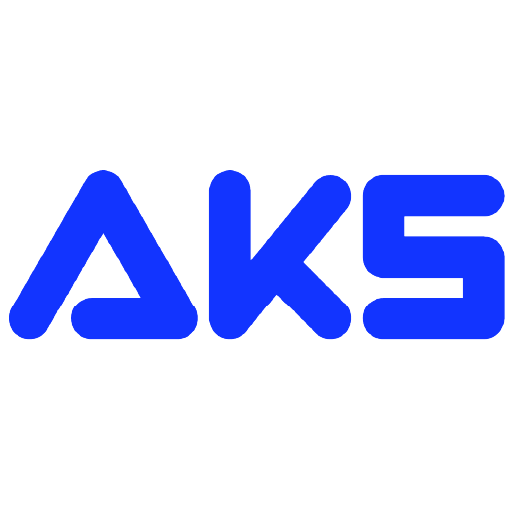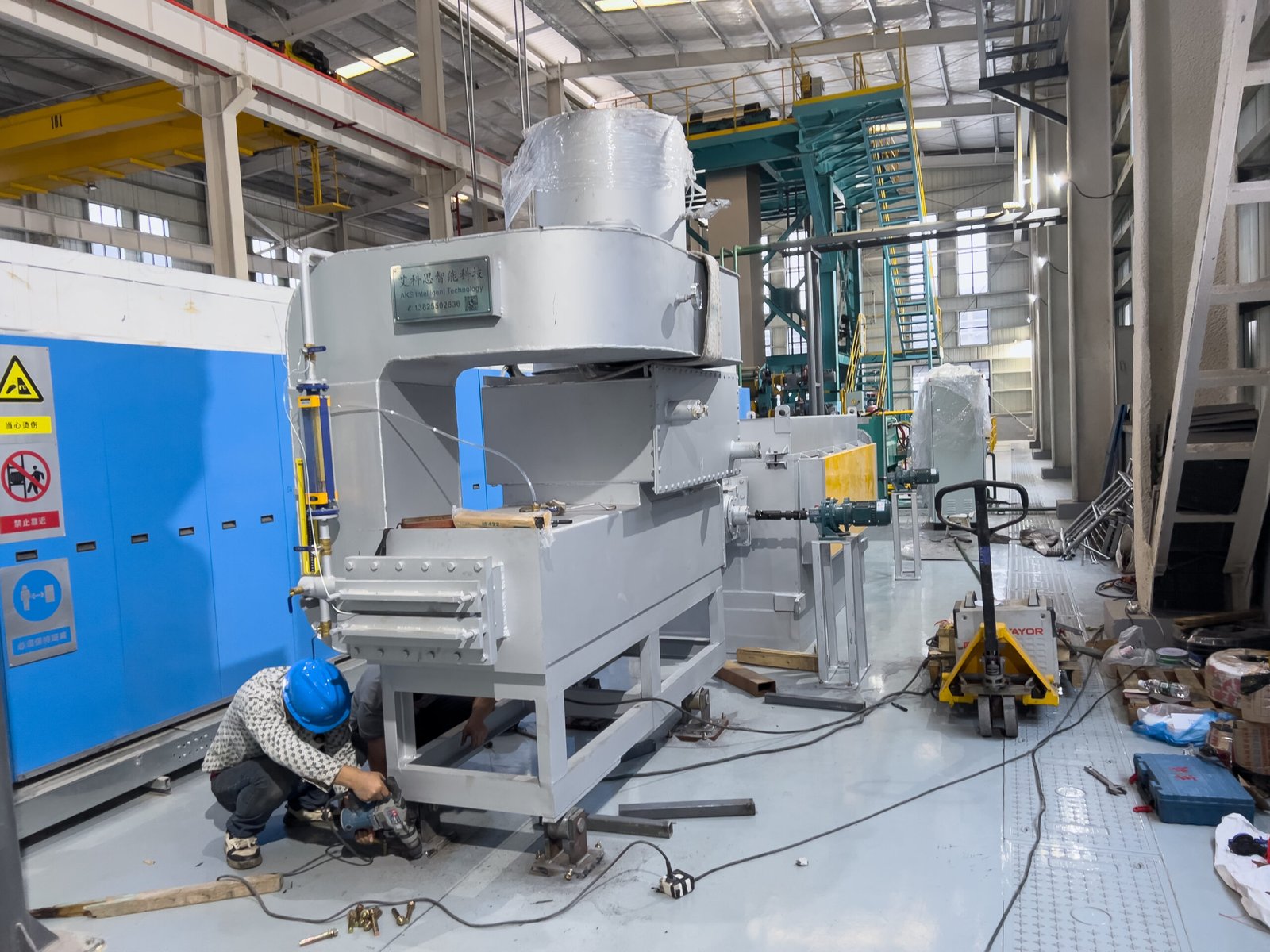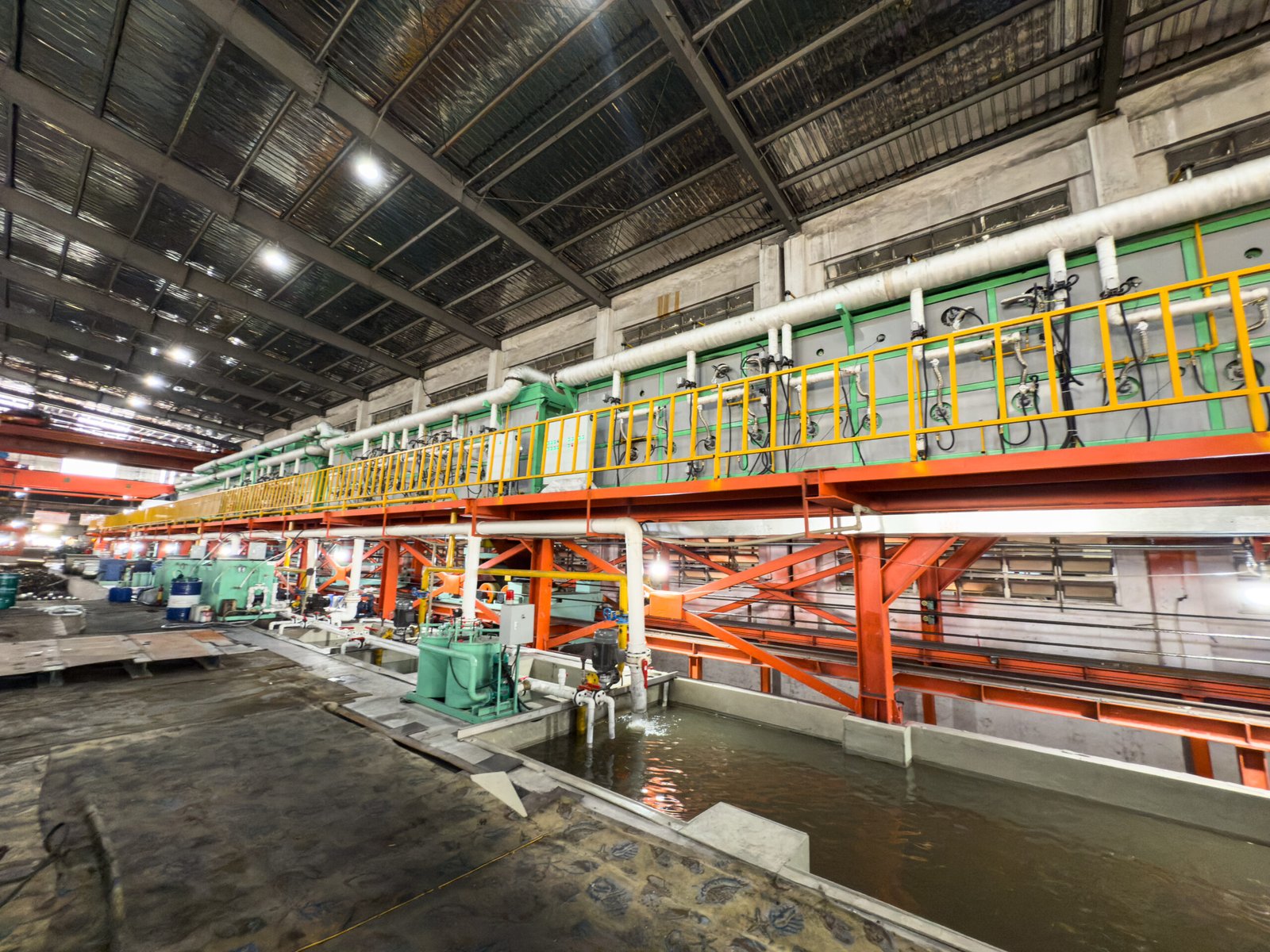How Are Vertical Furnaces Revolutionizing Bright Annealing for Ultra-Thin Stainless Steel Precision Strips?
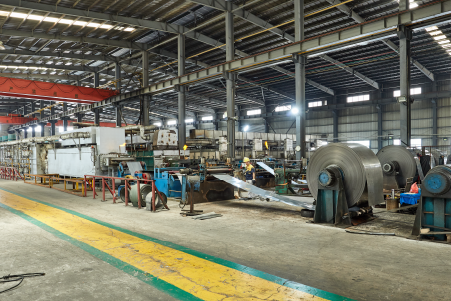
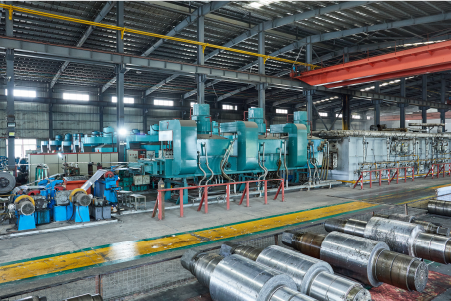
Achieving a flawless, mirror-like finish on ultra-thin stainless steel strips is a monumental challenge. Traditional annealing often introduces scratches and inconsistencies, leading to material waste, production delays, and a failure to meet the exacting standards of modern high-tech industries, ultimately costing your business money and reputation.
Vertical bright annealing furnaces are revolutionizing the processing of ultra-thin stainless steel by enabling non-contact heat treatment. This innovative approach eliminates surface scratches and ensures perfectly uniform heating and cooling, resulting in superior strip flatness, consistent mechanical properties, and the flawless bright finish essential for high-tech applications.
The demand for thinner, stronger, and more precise materials is exploding across sectors like electronics, medical devices, and aerospace1. Meeting this demand is no longer just a competitive advantage; it's a necessity for survival. The choice of annealing technology is at the heart of this challenge, and as we'll explore, the shift to vertical processing is proving to be a game-changer for manufacturers worldwide.
This isn't just an incremental improvement. It's a fundamental paradigm shift. For decades, we relied on horizontal furnaces, but their inherent design—relying on rollers to support the strip—presents a physical barrier to perfection, especially for materials thinner than a human hair (≤ 0.02 mm). I’ve seen countless facilities struggle with yield rates below 85% for these delicate products. The future, driven by applications like foldable phone screens and intricate medical implants, demands a process that can deliver near-perfect results, time and time again. This is where the vertical furnace truly distinguishes itself, moving from a brute-force heating method to an elegant, precision-driven process.
What is bright annealing and why is it important for stainless steel precision strips?
Ever wondered how stainless steel gets its brilliant, corrosion-resistant finish without any post-processing? The wrong annealing process can leave it dull, oxidized, and unusable for high-end products, compromising both aesthetics and performance and tarnishing your brand's reputation for quality in a competitive market.
Bright annealing is a heat treatment process performed in a controlled atmosphere, typically a hydrogen or nitrogen-hydrogen mix. It is crucial for precision strips as it softens the metal for further processing while preventing surface oxidation, ensuring a clean, bright finish and consistent metallurgical properties.
The importance of a "bright" finish extends far beyond simple aesthetics, especially in the world of high-performance materials. For a manufacturer of precision electronic components, for instance, an oxidized surface can impede conductivity and solderability. For a producer of medical instruments, a non-oxidized, pristine surface is non-negotiable for hygiene and biocompatibility. The magic behind this lies in the furnace's controlled atmosphere, which actively prevents the formation of a chromium oxide layer that would otherwise dull the surface during the high-temperature annealing cycle. This protective environment ensures the strip emerges as bright and clean as it entered. However, achieving this perfect state, particularly on ultra-thin and delicate strips, is a complex dance of chemistry and physics, and not all bright annealing methods are created equal. The method you choose directly impacts your final product's quality, cost, and performance in the market. As we delve deeper, we’ll see how the process itself is as critical as the material.

The decision to invest in bright annealing technology is a strategic one, rooted in a deep understanding of metallurgy, process efficiency, and market demands. It represents a commitment to producing a superior product that stands out from the competition. At its core, the process is about control—control of the atmosphere, control of the temperature, and ultimately, control of the final material properties. This control is what allows manufacturers to bypass entire steps in their production chain, like chemical pickling2, leading to significant economic and environmental benefits. For my clients, the conversation often starts with quality but quickly turns to the total cost of ownership and return on investment, where bright annealing consistently proves its value.
The Science Behind a Flawless Finish: Controlled Atmospheres
The defining feature of bright annealing is the carefully managed atmosphere within the furnace. To prevent the stainless steel's chromium content from oxidizing at high temperatures (which creates a dull, gray surface), the process is conducted in a reducing atmosphere3. Most commonly, this is a mixture of nitrogen (N₂) and hydrogen (H₂), or in some cases, pure hydrogen. The hydrogen is the active agent; it reacts with any residual oxygen in the furnace and, more importantly, reduces any surface oxides already present on the strip, effectively cleaning it on a molecular level.
A critical parameter we help our clients master is the "dew point" of the furnace atmosphere. The dew point is the temperature at which water vapor in the gas will condense, and it's a direct measure of the moisture content. A low dew point (typically below -60°C) is essential because water vapor (H₂O) is an oxidizing agent at annealing temperatures. We once worked with a client in the medical device sector producing high-precision surgical tools. Their rejection rate was unacceptably high due to microscopic discoloration. By installing a more advanced gas monitoring system and optimizing their N₂-H₂ mixture to achieve a consistently low dew point, they not only eliminated the discoloration but also reduced their gas consumption by 15%, a significant operational saving.
The choice between a pure hydrogen and a nitrogen-hydrogen atmosphere often comes down to a balance of cost and required performance. Pure hydrogen is a more powerful reducing agent and allows for faster processing, but it is also more expensive and requires more stringent safety protocols. For most high-quality stainless steel applications, a blend of 5-25% hydrogen in nitrogen provides an excellent combination of performance and safety, delivering that coveted bright, passive surface that resists corrosion.
Metallurgical Transformation: Beyond the Surface
While the "bright" finish is the most visible outcome, the primary purpose of annealing is to alter the metal's internal structure. When stainless steel is cold-rolled into thin strips, it undergoes a process called work hardening4. This makes the material stronger but also brittle and difficult to form. Annealing reverses this by heating the steel to a specific temperature (typically above 1000°C) where a process called recrystallization5 occurs. The deformed, stressed grain structure of the cold-worked metal is replaced by a new set of strain-free, equiaxed grains.
This transformation is what restores the material's ductility and softness, making it suitable for subsequent forming, stamping, or drawing operations. The final grain size is a critical factor influencing the mechanical properties of the strip, and it's controlled by the annealing temperature and the time the strip is held at that temperature. A finer grain size generally results in higher strength and a better surface finish on formed parts. At AKS, we design our furnaces with multiple, independently controlled heating zones to allow for precise thermal profiling. This gives our clients the ability to tailor the annealing cycle to achieve the exact grain structure and hardness (measured in HV) required for their specific application.
A few years ago, a customer producing flexible metal connectors for the automotive industry was experiencing field failures due to cracking. We brought their material into our lab and discovered that their existing annealing process was resulting in a coarse and inconsistent grain structure. By working with them to implement a new thermal profile in one of our furnaces with a more rapid cooling section, we helped them achieve a fine, uniform grain structure. This not only solved the cracking issue, improving their product reliability to over 99.9%, but also allowed them to use a slightly thinner starting material, saving them money on raw material costs.
The Economic Imperative: Why a Bright Finish Pays Off
The strategic advantage of bright annealing becomes crystal clear when you analyze the downstream economic impact. The traditional alternative, "black annealing6" followed by acid pickling, is a multi-step, costly, and environmentally challenging process. After annealing in a standard atmosphere, the strip is covered in a black oxide scale that must be chemically removed. This pickling process involves large tanks of hazardous acids, significant water usage for rinsing, and the complex, expensive task of treating and disposing of the waste acid.
Bright annealing eliminates these steps entirely. The product that exits the furnace is the final product—clean, bright, and ready for the next stage of manufacturing or for shipping directly to the customer. This immediately translates into a shorter production cycle, reduced labor requirements, and the complete eradication of costs associated with acid purchase, handling, and disposal.
Let's consider a practical example. An Indian client of ours, a large-scale producer of stainless steel kitchenware, was operating a traditional pickling line. After switching to an AKS bright annealing line for their 304-grade stainless steel strips, they calculated that they were saving approximately $12 per ton of steel processed. This was purely from the elimination of acid and the associated labor. When they factored in the reduced water consumption, lower energy costs from a more efficient furnace, and a 5% improvement in material yield (no more material lost to over-pickling), the total savings were closer to $20 per ton. For a facility processing thousands of tons a year, this represents a massive boost to their bottom line and a significant reduction in their environmental footprint.
| Feature | Bright Annealing Process | Traditional Annealing + Pickling |
|---|---|---|
| Production Steps | Single Step: Heat Treatment | Multiple Steps: Annealing, Descaling, Pickling, Rinsing |
| Surface Finish | Bright, Mirror-like, Ready-to-use | Dull, Scaled, Requires Chemical Cleaning |
| Environmental Impact | Minimal; No hazardous chemicals | High; Use and disposal of strong acids |
| Operating Cost | Lower (No acid/water treatment) | Higher (Acid, water, waste disposal costs) |
| Material Yield | Higher; No material loss from pickling | Lower; Acid can etch away base metal |
| Process Control | High Precision | Lower Precision, Risk of Over/Under-pickling |
How do vertical furnaces differ from traditional annealing methods?
Are you still struggling with scratches, roller marks, and uneven tension on your thin metal strips from traditional horizontal furnaces? These defects lead to high rejection rates and wasted material, directly hitting your bottom line and preventing you from competing in the high-precision market.
Vertical furnaces differ from traditional horizontal methods by processing the strip in a vertical orientation. This design eliminates contact with rollers or hearths in the critical heating and cooling zones, preventing scratches and ensuring uniform tension and heat exposure on both sides of the material vertical vs horizontal annealing furnace designs.
Imagine trying to handle a delicate piece of aluminum foil over a series of hot, spinning rollers without leaving a single mark or causing it to stretch. Now imagine that foil is a valuable stainless steel strip, less than 20 microns thick, inside a 1100°C furnace challenges in annealing ultra-thin metal strips7. This is the fundamental challenge of traditional horizontal annealing. The very components meant to support the strip—the hearth rollers—become the primary source of defects. The vertical furnace design turns this concept on its head, quite literally. It’s not just an incremental improvement; it’s a complete re-evaluation of how to handle delicate materials under extreme conditions. By using gravity and sophisticated tension control instead of physical support, the vertical furnace creates a non-contact environment. This shift was born out of necessity, driven by the relentless push from industries like consumer electronics and precision instrumentation for materials with a perfection that horizontal systems simply cannot guarantee.
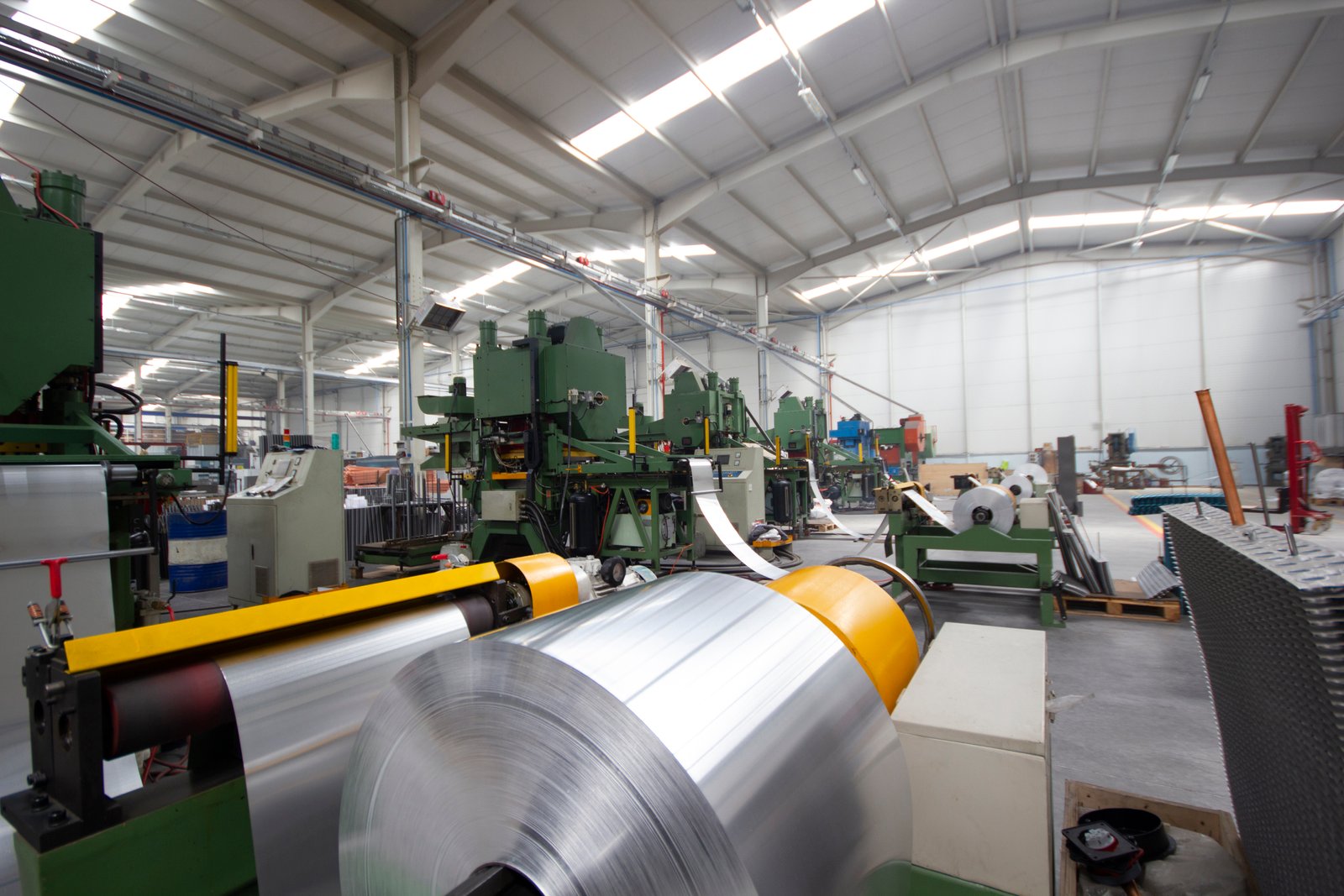
When I walk clients through the differences between horizontal and vertical annealing lines, the core distinction always comes down to one word: contact. In a horizontal furnace, the strip's journey is defined by its continuous contact with support rollers. In a vertical furnace, its journey is defined by the complete absence of contact in the most critical phases. This single design principle creates a cascade of benefits that impact everything from surface quality and material properties to operational efficiency and even the physical layout of a factory floor. Understanding these differences is key to appreciating why the vertical furnace has become the gold standard for high-value precision strip production.
The Core Difference: Contact vs. Non-Contact Processing
In a traditional horizontal continuous furnace, the metal strip is transported through the heating and cooling chambers on a series of driven ceramic or alloy rollers. While these rollers are highly engineered and polished, at the temperatures required for annealing stainless steel, they are never perfectly inert. They create thermal "sinks," causing slight temperature variations where they touch the strip. More critically, any microscopic imperfection or debris on a roller can be imprinted onto the soft, hot metal surface, causing scratches, dents, or a repetitive pattern known as "hearth roll marking8." For ultra-thin, mirror-finish materials, these defects are cause for immediate rejection.
The vertical furnace elegantly solves this problem. The strip enters at the bottom, is pulled upward through the heating chamber, and then downward through the cooling chamber by a sophisticated drive system located entirely outside the hot zone. Within the furnace muffle, the strip hangs freely, suspended by its own tension. This non-contact path means there is zero possibility of roll marks, scratches, or contact-induced contamination. It is the only practical way to ensure both sides of an ultra-thin strip receive a perfectly uniform treatment and emerge with a flawless surface. I recall a client who manufactures high-reflectivity stainless steel foil for decorative applications. Their horizontal line produced a yield of only 80% for their premium product. After installing one of our AKS vertical furnaces, their first-pass yield for the same foil jumped to over 98%, fundamentally changing the economics of their most profitable product line.
Thermal Uniformity and Atmosphere Control
The benefits of the vertical design extend deep into the thermodynamics of the process. In a vertical heating chamber, the heating elements can be arranged cylindrically or in parallel arrays, creating a perfectly symmetrical radiation field around the free-hanging strip. This ensures that both sides of the strip absorb heat at exactly the same rate, leading to exceptional thermal uniformity across the strip's width and length thermal uniformity in industrial annealing furnaces9. This uniformity is critical for achieving consistent grain size and mechanical properties, which is paramount for materials used in precision springs, diaphragms, or sensor components. We've recorded temperature deviations of less than ±2°C across the strip width in our vertical systems, a level of precision that is extremely challenging to match in a horizontal furnace where the bottom of the strip is shielded by rollers.
Furthermore, the vertical orientation promotes superior atmosphere control. In any gas mixture, stratification can occur due to differing gas densities (e.g., hydrogen is much lighter than nitrogen). In a long horizontal furnace, this can lead to an inconsistent atmosphere along the length of the chamber. The tall, column-like design of a vertical furnace, combined with top or bottom gas injection, creates a natural convection loop. This continuously circulates the atmosphere, ensuring a perfectly homogenous and stable gas mixture throughout the process. A stable atmosphere with a consistently low dew point is the key to a truly "bright10" and oxide-free finish.
Footprint, Tension, and Material Handling
From a practical facility layout perspective, the two furnace types present a clear trade-off. Horizontal furnaces can be extremely long, often exceeding 50-100 meters, consuming a vast amount of valuable factory floor space. Vertical furnaces, by contrast, utilize vertical space. While they require a significant ceiling height (often 15-30 meters), their footprint on the factory floor is remarkably small. I've worked with many clients in dense industrial areas where floor space is at a premium, and the ability to "go up" instead of "out" was a key factor in their decision.
Most importantly, for ultra-thin materials, is the issue of tension control. In a horizontal furnace, managing the tension on a strip thinner than 0.05 mm is a nightmare. The strip has a natural tendency to sag between rollers, a phenomenon known as catenary11. Controlling this sag to prevent stretching, wrinkling, or wandering is incredibly difficult. In a vertical furnace, gravity becomes an asset, not a liability. The strip's own weight helps keep it stable, and sophisticated control systems using dancer rolls can maintain incredibly low and precise tension—often with a precision of just a few Newtons. This gentle handling is the only way to process the most delicate and valuable precision strips without causing deformation.
| Parameter | Vertical Furnace | Horizontal Furnace |
|---|---|---|
| Primary Advantage | Non-contact processing | Lower height requirement |
| Surface Quality | Flawless; no roll marks | Risk of scratches, dents, marks |
| Min. Strip Thickness | As low as 0.01 mm | Challenging below 0.05 mm |
| Thermal Uniformity | Excellent (±2°C) | Good to Fair (±5-7°C) |
| Typical Yield Rate | >98% for thin strips | 80-90% for thin strips |
| Factory Footprint | Small (utilizes vertical space) | Very Large (requires long floor space) |
What innovative features do vertical furnaces offer for processing ≤ 0.02 mm precision strips?
Processing stainless steel strips as thin as a human hair (≤ 0.02 mm) is not just a challenge; it's a new frontier. Standard equipment can easily tear, stretch, or damage these fragile materials, making production seem nearly impossible and highly unprofitable.
Snippet paragraph: For ultra-thin strips (≤ 0.02 mm), vertical furnaces offer innovations like non-contact jet cooling and advanced dancer roll systems for micro-tension control, and integrated automation with process data logging. These features ensure strip stability, prevent deformation, and guarantee the highest quality and yield.
When you’re dealing with materials that are barely there, the margin for error is zero. The forces that are negligible in standard gauge annealing—slight tension fluctuations, minor air currents, small temperature variances—become catastrophic for ultra-thin strips. A vertical furnace designed for these materials is more than just a heating chamber; it's a complete, high-precision ecosystem. The innovation isn't in a single component but in the seamless integration of multiple advanced technologies, all working in concert to handle the material as if it were floating on air. From the moment the strip enters the furnace to the moment it's recoiled, every step is managed with a level of precision that was unimaginable a decade ago. It's this suite of features that transforms the seemingly impossible task of annealing 15-micron foil into a reliable, repeatable, and profitable industrial process.

At AKS, developing furnaces for the sub-0.02 mm market has been a core focus of our R&D. It's a field where off-the-shelf solutions fail. Success requires a holistic design philosophy where the mechanical, thermal, and atmospheric systems are co-engineered for the unique challenges of fragile material handling. I’ve seen firsthand how these integrated features empower our clients to enter new markets, producing foils for flexible electronics, battery components, and micro-mechanical devices—markets that are defined by their demand for extreme precision. Let's break down the key innovations that make this possible.
Advanced Tension Control Systems
For ultra-thin strips, tension is everything. Too much, and the strip stretches or even tears. Too little, and it can flutter or wander, leading to uneven cooling or contact with the furnace walls. Vertical furnaces for precision strips employ highly sophisticated tension control systems. The heart of this system is often a set of "dancer rolls" located at the entry and exit. These are not simple guide rolls; they are lightweight, low-inertia rollers mounted on a pivoting arm or vertical slide, connected to sensors. The dancer's position provides real-time feedback on the strip's tension.
This feedback is fed into a PLC (Programmable Logic Controller) that instantly adjusts the speed of the main bridle and recoiler motors to maintain a constant, pre-set tension. We're not talking about coarse adjustments; these systems can maintain tension with a precision of ±0.5 Newtons. This micro-tension control is what allows a 1-ton coil of 0.015 mm strip to be processed from end to end without a single break. A client of ours producing foils for flexible printed circuits (FPCs) found this feature to be the single most critical factor. Their previous attempts with other systems resulted in constant tearing and a yield below 50%. Our furnace's dancer system gave them the stability to achieve consistent, profitable production runs.
Jet Cooling and Gas Wiping Technology
After the strip passes through the heating zone, it must be cooled rapidly but in a highly controlled manner to lock in the desired metallurgical structure. Traditional cooling sections might use a water-jacketed chamber, but for ultra-thin strips, this can be too slow or uneven. The state-of-the-art solution is a non-contact jet cooling system. This technology uses plenums equipped with hundreds of precision-engineered nozzles that impinge high-velocity, cooled protective gas (like hydrogen or nitrogen) directly onto both sides of the strip.
This method offers incredibly high heat transfer rates, allowing for rapid cooling (exceeding 100°C per second) without any physical contact. The force of the gas jets on both sides also has a stabilizing effect, helping to keep the strip perfectly centered and flat as it cools. Some advanced systems also incorporate a "gas wiper" or "gas knife" at the exit of the cooling chamber. This is a high-pressure curtain of gas that effectively squeegees off any boundary layer of stagnant atmosphere, further enhancing cooling efficiency and ensuring the strip is perfectly clean as it exits the controlled environment. This technology is essential for achieving the high-quality surface and flatness required for applications like razor blades or surgical knives.
Integrated Automation and Data Logging
Modern vertical furnaces are not just machines; they are intelligent manufacturing systems. Every critical parameter is monitored by sensors and controlled by a central automation system. This includes dozens of temperature zones, gas flow rates, dew point, strip speed, and tension. The entire annealing "recipe" for a specific product can be stored and recalled with the push of a button, ensuring perfect repeatability from coil to coil and shift to shift.
More importantly, all of this data is continuously logged. This creates a complete digital record of the processing conditions for every meter of the strip. This is not just useful for quality control; it is often a requirement for clients in the aerospace, medical, and automotive sectors who require full material traceability. I worked with an aerospace supplier who used this data to certify their parts. When their end-user performed an audit, they could provide a complete time-stamped report showing that the annealing parameters never deviated from the specification. This level of process transparency and control builds immense trust and is a powerful competitive advantage. The future of this technology lies in using this data for predictive maintenance and AI-driven process optimization, a field we are actively pioneering.
| Innovation | Purpose | Impact on ≤ 0.02 mm Strips |
|---|---|---|
| Dancer Roll Tension Control | Maintain precise, low-level tension. | Prevents tearing, stretching, and wandering. Enables stable processing. |
| Jet Cooling System | Rapid, uniform, non-contact cooling. | Achieves desired metallurgical properties and superior flatness. |
| Gas Wiping Technology | Stabilize strip and enhance cooling. | Improves strip stability and surface cleanliness. |
| Integrated PLC & Data Logging | Automate process and ensure traceability. | Guarantees repeatability, quality assurance, and certification. |
How is the use of vertical furnaces impacting the efficiency and quality of stainless steel manufacturing?
Are you constantly battling high scrap rates and inconsistent quality that erode your profits? Relying on outdated technology in a competitive market means falling behind, as customers flock to suppliers who can deliver flawless, high-performance materials every single time.
Vertical furnaces significantly impact manufacturing by drastically reducing rejection rates from surface defects, which can fall from over 10% to less than 2%. Their enhanced thermal control and efficiency also boost throughput for high-margin products and enable the production of new, ultra-thin materials.
The impact of adopting vertical furnace technology goes far beyond simply producing a prettier product. It creates a ripple effect throughout the entire manufacturing ecosystem, fundamentally changing a company's cost structure, production capacity, and competitive position. I've seen it happen time and again: a company invests in a vertical line not just to solve a quality problem, but as a strategic move to redefine what's possible. It allows them to move up the value chain, shifting from producing commodity-grade steel to becoming a key supplier for the world's most demanding industries. This transition isn't just about efficiency in terms of energy or speed; it's about the efficiency of value creation—getting more value out of every kilogram of raw material by transforming it into a product that commands a premium price.
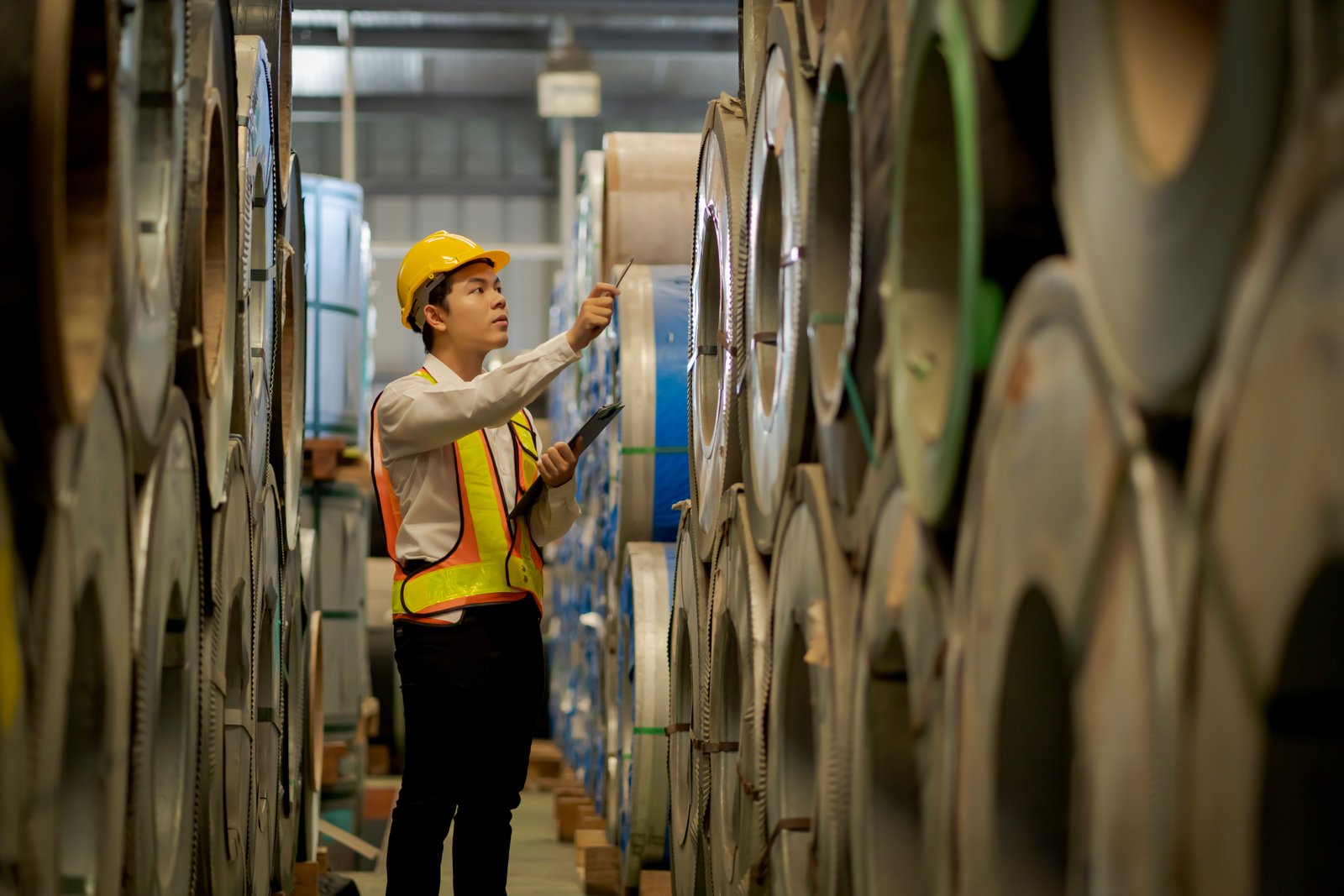
When we analyze the return on investment for our clients, the discussion centers on three key areas: a dramatic improvement in material yield, a significant boost in operational efficiency, and the newfound capability to innovate and enter previously inaccessible markets12. These are not abstract benefits; they are measurable, quantifiable improvements that show up directly on the balance sheet. The decision to upgrade to a vertical furnace is an investment in quality that pays dividends in efficiency and market leadership. It’s a story I’ve been proud to be a part of with many of our partners at AKS.
Drastic Reduction in Rejection Rates
The most immediate and financially significant impact of a vertical furnace is the near-elimination of surface-related defects. In a traditional horizontal process for thin-gauge material, it's not uncommon for a manufacturer to live with a rejection or scrap rate of 10-15% due to scratches, roller marks, and inconsistent finishes. For high-value alloys or ultra-thin strips, that represents an enormous amount of lost revenue. Because the vertical furnace processes the strip in a non-contact manner, these sources of defects are completely engineered out of the system.
The result is a dramatic increase in the first-pass yield13—the percentage of material that meets all quality standards without needing to be reprocessed or scrapped. We have consistently seen our clients reduce their rejection rates to below 2%, and in many cases, below 1%. Consider a mid-sized stainless steel service center processing 2,000 tons of high-finish strip per month. A reduction in scrap from 10% to 2% means they salvage 160 tons of valuable product every single month. At a conservative value of $2,500 per ton, that translates to $400,000 in direct savings or recovered revenue, every single month. This alone can often justify the entire capital investment in less than two years.
Enhanced Energy Efficiency and Throughput
Modern vertical furnaces are designed with energy efficiency as a core principle. At AKS, for example, our designs incorporate dual-layer furnace chambers and advanced insulation materials that minimize thermal loss to the environment. Crucially, we integrate waste heat recovery systems14. The hot exhaust gases from the furnace muffle are not simply vented; they are passed through a heat exchanger to preheat the incoming process gas or combustion air. This simple regenerative process can reduce overall energy consumption by 20-30% compared to older designs without heat recovery.
Furthermore, the enhanced process control and rapid cooling capabilities of vertical furnaces can lead to increased throughput. Because the heating and cooling are so efficient and precise, cycle times can often be shortened without compromising quality. This means more tons of steel can be processed per hour. A client of ours who replaced two older horizontal lines with a single, modern vertical furnace not only reduced their energy bill by 40% but also increased their total production capacity for high-margin thin-gauge products by 30%. They met their growing customer demand without having to expand their factory footprint.
Enabling New Product Capabilities
Perhaps the most transformative impact is that vertical furnaces empower manufacturers to produce materials they simply could not make before. The market for ultra-thin precision strips (below 0.02 mm)15 is growing rapidly, but it is inaccessible to companies with only horizontal equipment. By investing in vertical technology, a manufacturer can suddenly enter this lucrative, high-tech market. They can start supplying foils for foldable phone hinges, precision diaphragms for sensors, components for EV batteries, and advanced medical implants.
This isn't just about adding a new product; it's about changing the company's identity and market position. They are no longer just a "metal supplier"; they become a "materials solution provider." This capability opens doors to partnerships with leading technology companies and insulates the business from the price volatility of commodity steel markets. I worked with a family-owned steel processor who had served the domestic construction market for 40 years. Their investment in a vertical bright annealing line allowed them to start exporting high-precision foils to the German automotive sector. Within five years, this new, high-value export business accounted for over 60% of their revenue and completely transformed their company's trajectory.
| Impact Area | Traditional Horizontal Furnace | Modern Vertical Furnace | Quantifiable Benefit |
|---|---|---|---|
| Material Yield | 85-90% Typical First-Pass Yield | >98% Typical First-Pass Yield | 8-13% reduction in scrap/rework |
| Energy Usage | High thermal loss, no heat recovery | Advanced insulation, heat recovery | 20-30% reduction in energy consumption |
| Product Capability | Limited to >0.05 mm thickness | Capable of processing ≤0.01 mm | Access to new high-tech markets |
| Process Control | Manual adjustments, inconsistent | Fully automated, data-logged | Perfect repeatability, full traceability |
What future advancements can be expected in the vertical furnace technology for ultra-thin stainless steel processing?
Are you prepared for the next wave of material demands? The pace of innovation in electronics and green energy is relentless, and the furnace technology of today may not be enough to produce the advanced materials of tomorrow, potentially leaving you behind your competitors.
Future advancements in vertical furnace technology will focus on AI-powered predictive process control to self-optimize annealing cycles. We will also see the [integration of in-line quality monitoring sensors and the use of advanced materials for more efficient and durable heating elements.
Looking ahead, the evolution of the vertical furnace will be defined by intelligence and integration. The goal is to move from a system that perfectly follows a pre-set recipe to one that can think, predict, and adapt in real time. We are on the cusp of creating a truly "smart" furnace. Imagine a system that can detect a microscopic variation in the incoming strip's thickness and automatically adjust the furnace's thermal profile milliseconds later to compensate. This level of control will be essential as we push the boundaries of materials science, working with even thinner gauges, more complex alloys, and striving for zero-defect production. The furnace of the future won't just be a piece of equipment; it will be an intelligent partner in the manufacturing process, and at AKS, we are actively developing the technologies that will make this a reality.
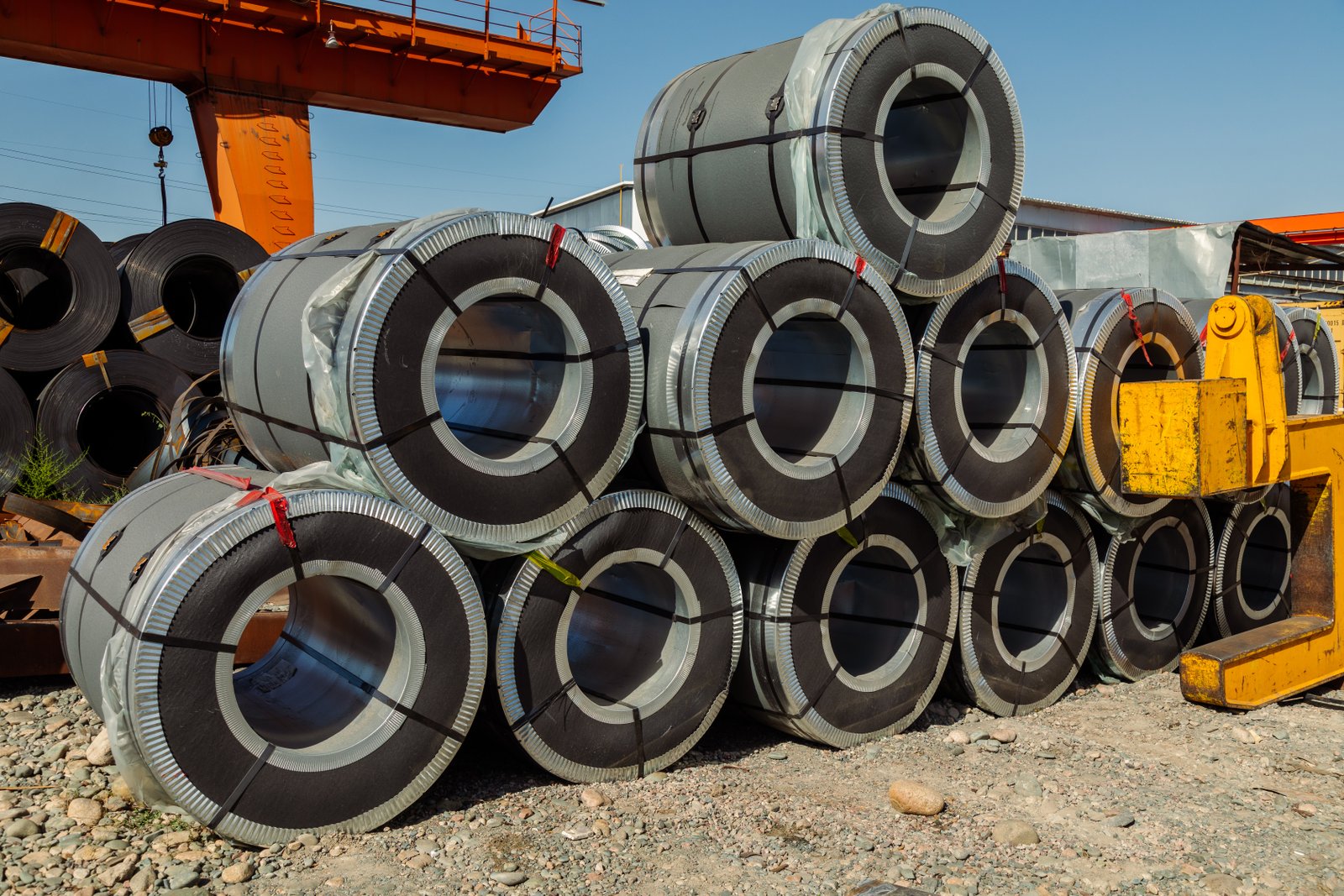
The journey of furnace technology has been one of continuous improvement, from rudimentary heating boxes to the precision-controlled vertical systems of today. The next leap forward will be driven by the convergence of advanced materials science, sensor technology, and the power of artificial intelligence. Our R&D team is not just thinking about how to build a better furnace; we're thinking about how to create a smarter, self-aware process line that anticipates problems before they happen and optimizes for levels of quality and efficiency that are impossible to achieve with human oversight alone.
AI-Powered Predictive Process Control
The next frontier is the "cognitive furnace." Instead of relying on fixed recipes, future systems will use Artificial Intelligence (AI) and Machine Learning (ML) algorithms to achieve predictive process control. These systems will be fed massive amounts of data—not just from the furnace sensors (temperature, tension, atmosphere) but also from upstream processes (e.g., rolling mill data) and downstream quality control (e.g., surface inspection results). The AI will analyze these complex relationships to build a dynamic model of the annealing process.
This model will allow the furnace to predict how minor variations in the input material will affect the final output. For instance, if the AI detects a slight increase in the hardness of the incoming strip, it can predictively increase the residence time in the peak temperature zone by a fraction of a second to ensure complete recrystallization. It could also predict the formation of a potential surface defect and adjust gas flow rates to prevent it. This moves beyond simple automation to true process optimization, constantly fine-tuning parameters to maximize yield, minimize energy consumption, and ensure every meter of the strip meets the tightest possible specifications. We are currently in pilot projects with research institutions to test these ML models, and the initial results show a potential for a further 50% reduction in process deviations.
Integration of In-Line Quality Monitoring
Currently, most comprehensive quality testing—like surface defect mapping or precise mechanical property testing—is performed offline after the coil has been annealed. The future is to integrate these quality control functions directly into the furnace line itself. We envision incorporating high-resolution optical surface inspection systems and non-destructive testing (NDT) techniques like eddy current sensors directly within the cooling section of the vertical furnace.
An integrated surface inspection system would scan the strip in real time as it exits the furnace. If it detects a microscopic flaw, it can instantly flag that section of the coil in the data log. An eddy current sensor could continuously measure the strip's conductivity, which correlates directly to its hardness and metallurgical phase, providing real-time verification that the annealing process was successful. This 100% in-line inspection provides immediate feedback, allowing for faster corrective action and eliminating the risk of an entire coil being rejected hours later during offline QC. For manufacturers of zero-defect products for the medical or aerospace industry, this level of integrated, real-time quality assurance will become the new standard.
Advanced Materials and Heating Elements
The heart of any furnace is its ability to generate and contain heat efficiently. Future advancements will come from the use of new materials for both the heating elements and the insulation. While traditional metallic heating elements are effective, research is ongoing into alternatives like silicon carbide (SiC) and even carbon composite elements. These materials can operate at higher temperatures, have longer lifespans, and offer different radiation characteristics that could enable faster and more uniform heating.
On the insulation side, the industry is moving beyond traditional ceramic fiber to explore nano-structured insulation materials and aerogels. These advanced materials offer significantly lower thermal conductivity in a thinner profile. This means a furnace could be built with thinner walls while providing better insulation, reducing energy loss and potentially shrinking the overall equipment footprint. A more efficient thermal design not only lowers operating costs but also provides more responsive thermal control, which is critical for processing advanced, sensitive alloys. At AKS, our material scientists are constantly evaluating and testing these next-generation materials to ensure our future furnace designs remain at the pinnacle of efficiency and performance.
| Future Advancement | Technology Involved | Primary Benefit for User |
|---|---|---|
| Predictive Process Control | Artificial Intelligence, Machine Learning | Self-optimizing furnace; reduces process deviations, maximizes yield. |
| In-Line Quality Monitoring | High-res cameras, Eddy Current sensors | 100% real-time inspection; eliminates offline QC delays. |
| Advanced Materials | SiC/Carbon heating elements, Aerogels | Higher efficiency, longer lifespan, more responsive thermal control. |
Conclusion
Vertical furnaces are not just an incremental upgrade; they are a transformative technology. By eliminating contact defects and offering unparalleled process control, they are indispensable for any manufacturer aiming to lead in the high-stakes, high-precision market of ultra-thin stainless steel strips and specialty foils.
-
Discover real-world uses of precision stainless steel in modern advanced industries ↩
-
See how chemical pickling works and how bright annealing offers an alternative ↩
-
Understand the science of gas atmospheres for oxidation prevention in metallurgy ↩
-
Learn about work hardening and how annealing restores ductility to cold-worked metals ↩
-
Find out about recrystallization and why it’s pivotal to material properties ↩
-
Compare black annealing to bright annealing and understand process/economic/environmental implications ↩
-
Explore the difficulties of processing ultra-thin strips in conventional furnaces ↩
-
Understand hearth roll marking defects and how they affect high-grade metal strips ↩
-
Discover why even heat distribution matters for metallurgical properties ↩
-
Find out how bright annealing works and what atmosphere is required for flawless stainless steel ↩
-
Learn how catenary influences strip handling in horizontal and vertical furnace designs ↩
-
Discover data and case studies on how vertical furnaces reshape ROI and company growth. ↩
-
Understand first-pass yield's significance and its effect on manufacturing profitability. ↩
-
Explore energy-saving mechanisms and real-world results of heat recovery in steel processing. ↩
-
Get insights into the applications and production challenges of ultra-thin precision steel strips. ↩
